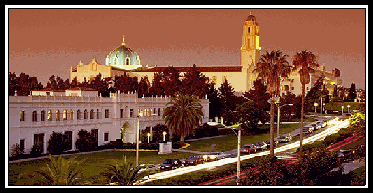|
E.
Aggregate Model of the Macro Economy
1. Aggregate demand curve
a. Derivation
.
.
.
.
.
.
.
.
.
. . . .
. . .
b. Shifting the aggregate demand curve
(1) Monetary policy
.
.
.
.
.
.
.
.
.
.
. .
(2) Fiscal policy
.
.
.
.
.
.
.
.
.
.
. (3) Other factors
.
.
.
.
.
.
c. Policy implementation and
issues
(1) Fiscal policy
(a) Lags
- Takes time for policy to take effect
-
Recognize problem
-
Pass legislation
-
Implement policy
-
Have impact on problem
.
(b) Automatic stabilizers - expenditure
and taxation programs that slow the economy during economic
expansions and stimulate the economy during recessions
Ex. - Unemployment insurance, progressive
income tax system
.
(c) Progressive income tax system - tax
rate increases as income increases
.
(d) Budget deficit and the
national debt
-
Deficit if government expenditures > government revenue
-
Debt = accumulated deficits
-
Are deficits and debt a problem?
.
i) Crowding out
.
.
.
.
.
.
.
.
.
.
ii) Who owns the debt?

.
iii) Is the debt a burden on
future generations?
.
(2) Monetary policy issues
(a) Lags
-
Recognition lag - same as fiscal
policy
-
Implementation lag - faster than
fiscal policy
-
Impact lag - slower than fiscal
policy
- Less impact than fiscal policy - can't force
people to borrow money
.
(b) Interest rates
-
Target federal funds rate to influence
other interest rates
-
Term
structure of interest rates - relationship between
maturity and interest rates
-
Yield
curve - graphical representation of the term
structure
.
.
.
.
.
.
.
.
.
.
2. Aggregate supply curve
-
Shows the price level at which firms are
willing to produce different amounts of real goods and
services
-
Depends on quantity and quality of resources used in
production, efficiency with which resources are used, and
production technology
.
a. Short-run aggregate supply
.
.
.
.
.
.
.
.
.
.
.
b. Long-run aggregate supply
-
Potential output - full-employment level of
output
-
Maximum amount that can be produced, given
resources and technology available
.
.
.
.
.
.
.
.
.
.
.
3. Equilibrium
.
.
.
.
.
.
.
.
.
.
.
.
4. Changes
a. Aggregate demand
.
.
.
.
.
.
.
.
.
.
.
.
b. Short-run aggregate supply
.
.
.
.
.
.
.
.
.
.
.
.
c. Long-run aggregate supply
.
.
.
.
.
.
.
.
.
.
.
.
5. Business cycle
.
.
.
.
.
.
.
.
.
.
.
a. Economic indicators
(1) Concurrent indicators
- Employees on
nonagricultural payrolls
- Personal income less transfers
-
Industrial production
-
Manufacturing and trade sales
.
(2) Leading indicators
- Average weekly hours,
manufacturing
-
Average weekly initial claims for
unemployment insurance
-
Manufacturer's new orders, consumer goods and
materials
-
Institute for Supply Management new orders
index
- Manufacturer's new orders,
nondefense capital goods excluding aircraft
-
Building permits, new private housing units
-
Stock prices, 500 common stocks
-
Leading Credit Index
-
Interest rate spread, 10-year Treasury bond
less federal funds
-
Average consumer expectations for business
and economic conditions
.
(3) Lagging
indicators
- Average
duration of unemployment
- Inventories to sales ratio,
manufacturing and trade
- Labor cost per unit of output,
manufacturing
- Average prime rate
- Commercial and industrial loans
- Consumer installment credit to
personal income ratio
- Consumer price index for services
.
b. Impact on managerial decisions
.
.
.
.
.
|


